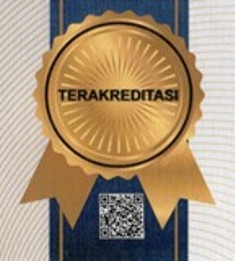The Influence of Educational Level, Type of Job, and Community Income on Community Participation in Waste Management in West Payakumbuh District
Abstract
Effective urban waste management is crucial, encompassing various dimensions such as financial, technical, legal, environmental, spatial planning, socio-cultural aspects, and stakeholder involvement. The household waste management landfill in Regional Payakumbuh is currently overcapacity, and the city lacks an independent waste landfill. This quantitative research utilizes Partial Least Squares Structural Equation Modeling (PLS-SEM) version 3.0 to analyze data, a method within Structural Equation Modeling (SEM). The study population consists of 120 households in the Talang Payakumbuh Barat neighborhood, selected using proportional random sampling. Results indicate that the education level of the West Payakumbuh community positively influences waste management. This is supported by a P value of 0.044 (< 0.05), with a t-statistic of 1.786 (lower than 1.96). The original sample value of 0.188 is positive, leading to the acceptance of hypothesis H1. Similarly, the type of occupation significantly and positively influences community participation in waste management in Payakumbuh, supported by a P value of 0.022 (< 0.05) and a t-statistic of 4.351 (> 1.96). The original sample value of 0.463 is positive, confirming the acceptance of hypothesis H2. Additionally, community income has a positive and significant impact on their participation in waste management in Payakumbuh, as evidenced by a P value of 0.031 (< 0.05), a t-statistic of 2.292 (> 1.96), and an original sample value of 0.031. Hence, hypothesis H3 is accepted. Community participation in waste management in Payakumbuh is also influenced by social and cultural factors. The diversity in educational backgrounds and occupations presents unique challenges, contributing to the creation of a clean and comfortable city environment. This research emphasizes the need for integrated waste management strategies and community involvement to address the waste disposal challenges faced by Payakumbuh.
Downloads
References
[2] Bonorowo Wetlands 5 (2): 85-93, December 2015. ISSN: 2088-110X, E-ISSN: 2088- 2475 DOI: 10.13057/bonorowo/w050204
[3] Azsuar Hari Pratama, Pengaruh TingkatPendidikan, Motivasi dan Pengalaman kerja terhadap Kinerja Pegawai PT Bank Sumsel Babel cabang syariah Palembang,Di akses 27 November 2023.
[4] Badan Pusat Statistik. 2018. Statistik Lingkungan Hidup Indonesia 2018. Jakarta: Badan Pusat Statistik.
[5] Badan Perencanaan Pembangunan Daerah Kota Payakumbuh . 2022. Pengelolaan Sampah 2019- 2023 Yogyakarta: Badan Perencanaan Pembangunan Daerah Payakumbuh
[6] Brooks, G., Carroll, K. C., Butel, J., & Morse, S. 2012. Jawetz, Melnick & Adelberg's Medical
[7] Microbiology (26th ed.). New York: McGraw-Hill Medical. h 305-506
[8] Chin, W. W. 1998. Commentary: Issues and opinion on structural equation modeling.
[9] Mis Quarterly, 22(1), pp. vii–xvi.
[10] Cecep Dani Sucipto, (2012), Teknologi Pengolahan Daur Ulang Sampah, Yogyakarta: Gosyen Publishing
[11] Coleman, J. S. (1961). The Adolescent Society: The Social Life of the Teenager and its Impact on Education. The Free Press.
[12] F. Hair Jr, J. et al. 2014. Partial least squares structural equation modeling (PLS-SEM) An emerging tool in business research. European Business Review, 26(2), pp. 106–121.
[13] Fransiska Tanuwijaya, dkk. 2016. Partisipasi Masyarakat dalam Pengelolaan Sampah di Bank Sampah Pitoe Jembangan Kota Surabaya. Kebijakan dan Manajemen Publik ISSN 2303- 341X Vol. 4 No. 2
[14] Ghozali, I. (2014). Structural Equation Modeling, Metode Alternatif dengan Partial Least Square (PLS) (4th ed.). Badan Penerbit Universitas Diponegoro.
[15] Gharib, R. K., Philpott, E. and Duan, Y. 2017. Factors affecting active participation in B2B online communities: An empirical nvestigation. Information & Management, 54(4), pp. 516–530.
[16] Hair, J. F. et al. 2006. Multivariate data analysis 6th Edition‟, New Jersey: Pearson Education.
[17] Hair, J. F., Black, W. C., Babin, B. J., & Anderson, R. E. (2010). Multivariate Data Analysis (7th ed.). Pearson Prentice Hall.
[18] Hair, J. F., Hult, G. T., Ringle, C. M., & Sarstedt, M. (2014). A primer partial least squaresstructural equation modeling (PLS-SEM). SAGE Publications.
[19] Hijrah Purnama Putra,Anggun Reza Taufiq, dan Any Juliani, 2013, “Studi Hubungan antara Tingkat Pendidikan dan Pendapatan Keluarga terhadap Sikap dalam Pengelolaan Sampah Rumah Tangga (studi kasus di Desa Condongcatur, Depok, Sleman, Yogyakarta)”. Jurnal Sains dan Teknologi Lingkungan ISSN: 2085-1227
[20] Undang-Undang Nomor 18 Tahun 2008 tentang Pengelolaan Sampah. Jakarta
[21] Pandu, N. A., Hardjomidjojo, H., & Dan Jono M Munandar3. (2020). Faktor-Faktor Yang Mempengaruhi Partisipasi Masyarakat Dalam Mereduksi Sampah Rumah Tangga Di Kota Bogor. 14(1), 31–41.
[22] Putra Hp, Wahid Sn. Pembuatan Trainer Tempat Sampah Otomatis Guna Menyiasati Masalah Sampah Di Lingkungan Masyarakat (Making Automatic Trash Trainer To Get Rid Of Waste Problems In The Community Environment). Jeee-U (Journal Electr Electron Eng. 2019;3(1):120.
[23] Rosseel, Y. 2012. lavaan: An R Package for Structural Equation Modeling. Journal of Statistical Software, 48(2), pp. 1–36. Available at: http://www.jstatsoft.org/v48/i02/.
[24] Sari N, Mulasari Sa. Pengetahuan, Sikap Dan Pendidikan Dengan Perilaku Pengelolaan Sampah Di Kelurahan Bener Kecamatan Tegalrejo Yogyakarta. J Med Respati [Internet]. 2017;12(April):1907–3887. Available From: Http://Eprints.Uad.Ac.Id/8012/1/30-55-1- Sm.Pdf
[25] Sugiyono, 2007, Metodologi Penelitian Bisnis, PT. Gramedia, Jakarta
[26] Winardi, Pengantar Ilmu Ekonomi. Cetakan Ketujuh (Bandung PT Raja Grafindo Persada, 2002), H.130
[27] Wiltshire. (2015). The Meanings Of Work In A Public Work Scheme In South. Africa.
[28] International Journal Of Sociology And Social Policy, 36
[29]Zulkifli Arif, (2014), Pengelolaan Limbah Berkelanjutan, Jakarta: Graha Ilmu







